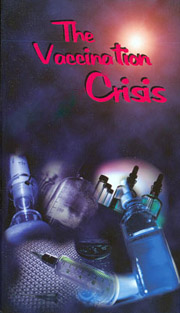2000 AND A NEW CRISIS“Unknown effects.” A March 2000 study, released by the Institute of Medicine at the National Academy of Sciences, concluded that there was “inadequate / insufficient evidence” to determine whether the anthrax vaccine could cause “long-term adverse health outcomes.” It added that there was a “paucity of published, peer-reviewed literature”; and those few reports only described “a few short-term studies” (NAS Institute of Medicine, “An assessment of the Safety of the Anthrax Vaccine, A Letter Report,” Washington, D.C., March 30, 2000, pp. 5-6). In other words, almost no research had ever been done about the safety or effectiveness of the strain of anthrax vaccine we had, and no long-term studies had ever been made! More pilots quit. By this time, hundreds of reserve pilots had quit the military. By the summer of 2000, over 400 servicemen had been disciplined for refusing to take the shots, and 51 had been court-martialed. A few served brief sentences in the brig. Only the U.S. military. Because of the extreme dangers of these anti-attack vaccines, no other nation in the world required its troops to be vaccinated, not one! Britain made anthrax vaccinations for its troops voluntary; and France did not give them at all. Mock bioattacks. In the spring of 2000, 10-day mock bio-attacks were staged in Portsmouth, New Hampshire, and Denver, Colorado. Much of this was done on paper, some in practice sessions. The exercise in Denver ended on May 23, as the make-believe “epidemic” spread out of control. Estimates of how many people would have gotten sick varied widely. Some said 3,700 plague cases with 950 deaths; others estimated more than 4,000 sick and 2,000 dead. Federal, state, and local officials quickly proclaimed the catastrophe a successful exercise. The entire operation cost $10 million. Interesting question. One problem was whether scarce resources should be devoted to treating the sick who might die or trying to stop the spread of the epidemic. At least the government discovered that it had lots of unanswered questions. How the money was spent. In the fall of 2000, Amy Smithson, an analyst at the Henry L. Stimson Center in Washington, conducted an 18-month investigation; and, among other things, it was found that only $315 million of the $8.4 billion the government spent on counterterrorism in the year 2000 was devoted to training people in cities and states to respond to a covert bioterrorism attack. Less than 4% of that amount was being spent outside of Washington, D.C.; and only 6% was spent to strengthen public-health facilities, the heart of useful biodefense preparedness. The rest was spent on faulty detectors, special vehicles, and other marginal items (Amy Smithson and Leslie-Anne Levy, Ataxia: The Chemical and Biological Terrorism Threat and the U.S. Response, Henry L. Stimson Center). Lots of money was being misdirected to objectives which would not protect the public. Teams set up. By January 2001, more than $143 million had been spent on rapid-reaction teams (renamed Civil Support Teams) within the National Guard. Each one was located on a military base; and many were long distances from the cities they were supposed to protect. (The closest one to Atlanta was 250 miles away in Florida.) After the September 11 tragedy occurred, everything speeded up; but there was much confusion as to what should be done, how it should be done, who should be in charge, and how should they cooperate with one another. Protecting another vaccine firm. In the fall of 2002, a last-minute addition was made in secret the night before the last major budget bill (the Homeland Defense Security Act) was passed by Congress. The addition released Eli Lilly & Co. from liability for damage from vaccines it sold to the public and to the military. |

